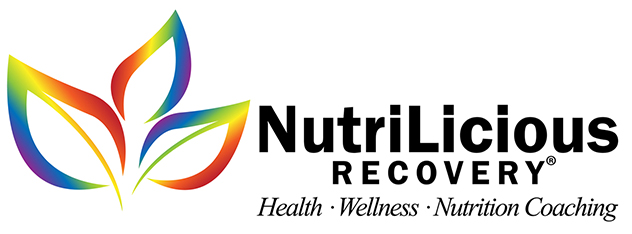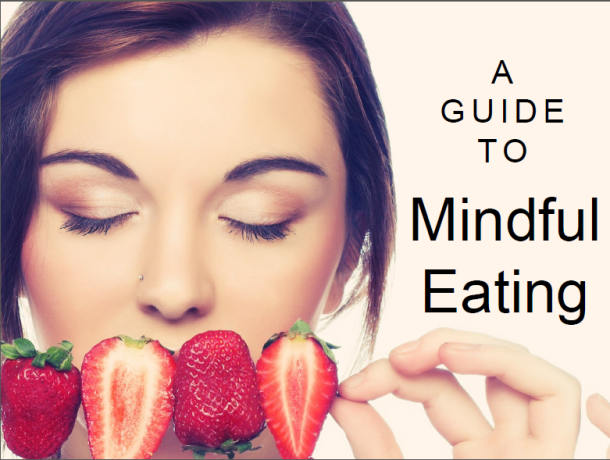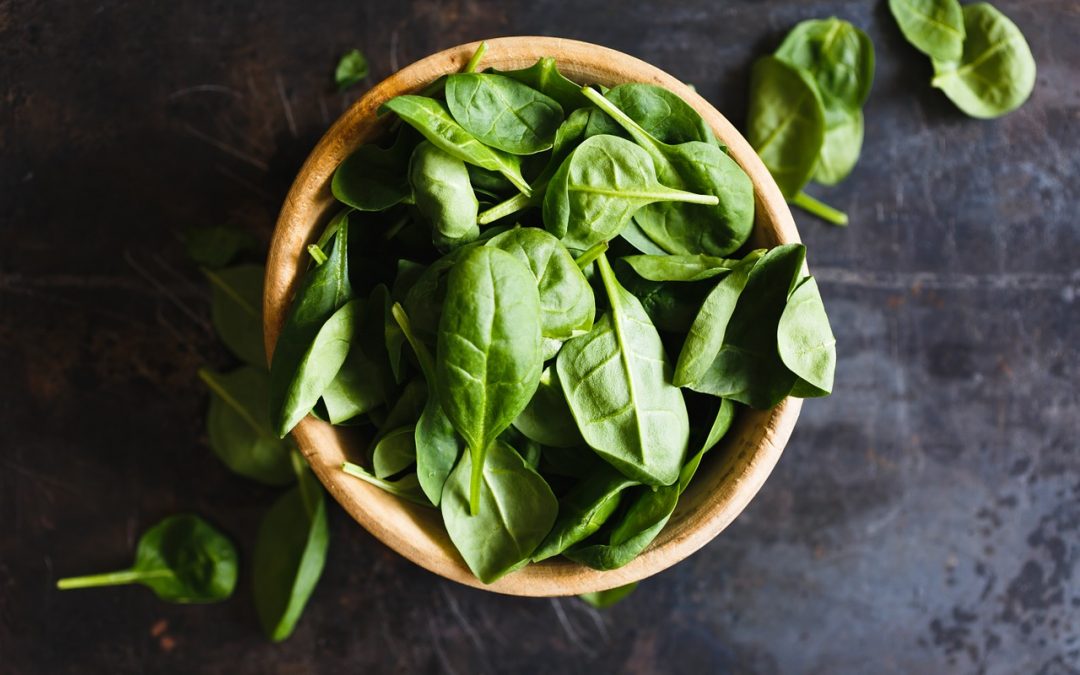
by dnshah | Apr 28, 2019 | Age Defying, Diet and Weight Loss, Health and Wellness Tips, Stress Management
The latest research has found that just one serving of leafy greens a day can take more than a decade (11 years) off an aging brain, in terms of decreased brain power; and two servings a day can have even greater results. What does this mean exactly? Our memory and brain function typically decline as we age; but we can take actions that allow us to not only stop memory loss, but also reverse it. One such action is eating our daily serving of greens.
In the past I’ve talked about the importance of G-B-O-M-B-S, the acronym used to discuss the daily foods one should eat to be healthy. It stands for Greens, Beans, Onions, Mushrooms, Berries, and Seeds/Nuts. That “G” just got upgraded to first class. Realistically the brain is one of our most prized organs, and if there is any nutrition out there that can minimize damage and promote improvement, it has to be talked about.
The strongest association with slowing down our aging decline in the brain is consumption of spinach, kale, collard greens, and lettuce varieties. Does it really matter if it is the vitamin K1, betacarotene, phylloquinone, lutein, nitrate, folate, kaempferol or alpha tocopherol? Most people don’t care as long as we are getting the benefits of consuming the greens in our meals or our smoothies (or both)! Remember that the Environmental Working Group states that spinach, kale, and celery made the dirty dozen list in 2019 and should be purchased organic.
For those actively trying to improve brain function, nutritional supplements can have a big impact, especially in terms of curcumin, a quality omega 3 (fish oil, flax meal), B vitamin supplements, and co-enzyme Q10. For more information, seek out a health professional to help you work your best strategy to improve you. Yes, you can!
Resources
2018, January 16; Barnes, LL; Bennett, DA; Booth, SL; Dawson-Hughes, B; Morris, MC; Wang, Y.; Neurology 90(3); Nutrients and Bioactives in Green Leafy Vegetables and Cognitive Decline.
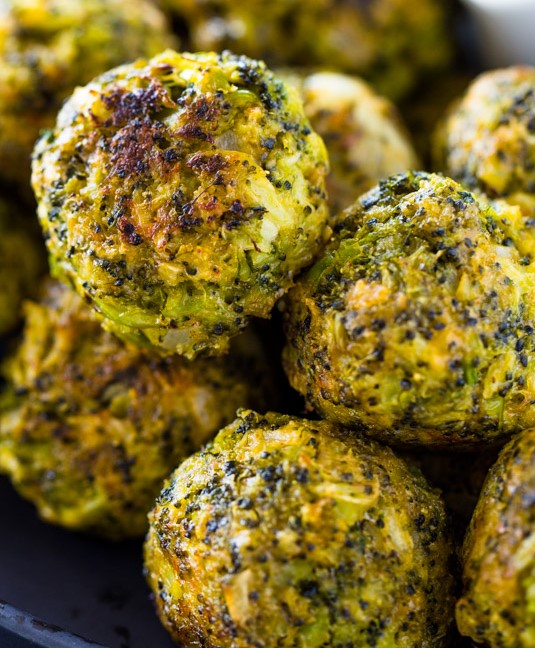
by dnshah | Mar 29, 2019 | Diet and Weight Loss, Main Dishes, Recipes, Side Dish
An amazing substitute for meatballs in pasta or a great appetizer. Makes 10-12 vegan balls.
INGREDIENTS
1 large head of broccoli, florets and tender stem, minced
¼ cup finely chopped onion
¼ cup finely chopped celery
1 teaspoon dried basil
1 Tablespoon nutritional yeast
1 teaspoon EVOO
½ teaspoon dried oregano
½ teaspoon garlic powder
½ chipotle pepper
⅓ teaspoon salt
¼ teaspoon ground black pepper
¼ cup almond meal
¼ cup bread crumbs, gluten-free if desired
1 chia seed egg: 1 Tablespoon chia seeds + 3 Tablespoons warm water, allow 2 minutes to gel
OPTIONAL: ¼ cup vegan cheese shreds
METHOD
- Heat oil over medium heat.
- Add onions & celery and cook for 3-4 minutes.
- Pulse the broccoli and basil in a food processor until minced. Add to the pan.
- Mix in salt and cook for 3-4 minutes to draw out excess moisture. Take off heat.
- Mix in the spices, almond meal, and breadcrumbs. Make the chia seed egg.
- Mix in the vegan cheese shreds if using. Add more breadcrumbs if needed.
- Preheat the oven to 400 degrees F / 200ºc.
- Prepare a parchment lined baking sheet.
- Shape the mixture into balls. If the balls are too crumbly, sprinkle some non-dairy milk and mix well.
- Place on prepared baking sheet.
- Bake for a total of 20 to 25 minutes or until crisp and golden on the outside. Serve warm with marinara or over spaghetti or as veggie balls in a sub sandwich.
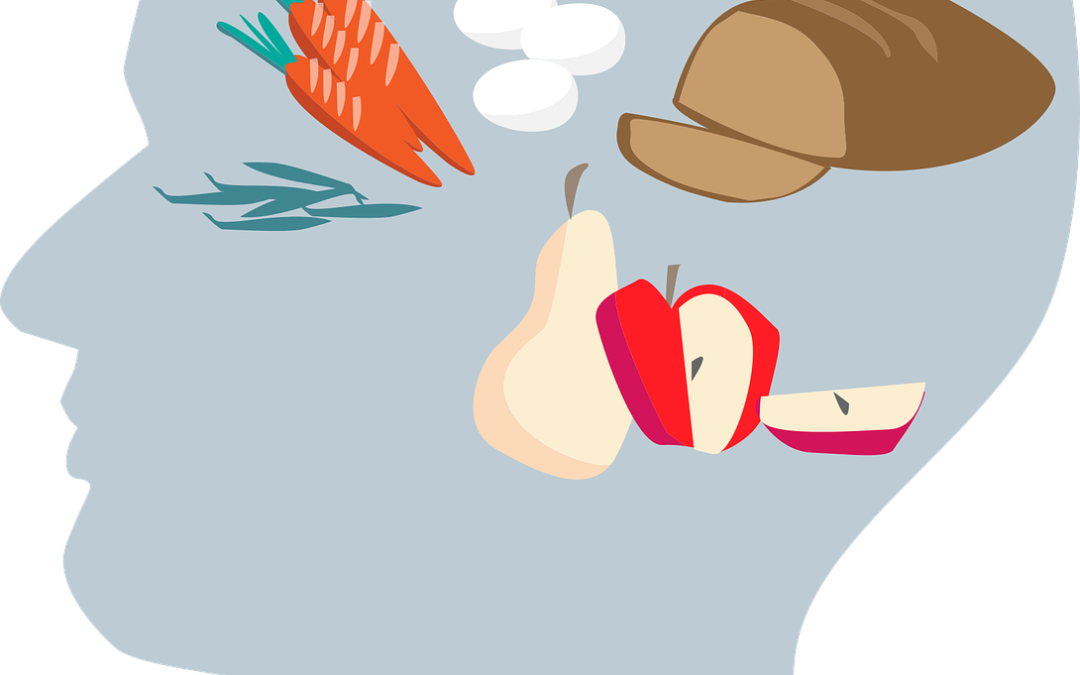
by dnshah | Mar 9, 2019 | Diet and Weight Loss, Health and Wellness Tips
What we put on the other end of our fork makes all the difference in our health – including brain health. Today’s children live very busy lives with distractions everywhere. Their little brains are working overtime to allow thought processes, movements, breathing, and creating the very essence of their personalities! I am a big advocate of nourishing the body so it can better grow, repair, and energize and boost immunity. In other words, take care of the organs – and they take care of you! The brain is one of the most high priority organs. It’s made up of highly metabolically active tissue, and it needs nourishment to meet its energy needs. I believe that our children need to be guided to eat those foods that are most brain nourishing for overall development and cognitive function. The top foods/considerations are listed, without respect to religion nor culture – just looking at nutrition.
- Dark chocolate/Cacao has a high content of flavonols, phytonutrients containing anti-oxidative properties that may help support memory and brain function.1 Look for at least 70% dark cacao noting that the higher numbers will add a bit of bitterness into the taste.
- Turmeric: Turmeric has been used for centuries, and is a pungent spice used throughout Asia. It contains curcumin, a polyphenol that gives turmeric its yellow color. Curcumin contains anti-oxidative properties, which may help with cognitive function.1 Many people take capsules, but I prefer drinking “golden milk” by adding 1 teaspoon turmeric powder to warm almond milk.
- Fish such as salmon, tuna, or mackerel, etc., which contain omega-3 fatty acids (EPA and DHA) which are crucial for brain growth and development.1 Including at least two servings/week of omega-3-rich food can help support cognitive function. It is not recommended to serve a deep fry, but to try salmon patties, or use in tacos or sandwiches. Many people have switched to fish oil instead of eating fish to avoid the ocean pollutants and heavy metal contaminants. I always prefer real food over pills, and in this case especially so since the fish oil capsules are not always pure and have their own contaminants in them.
- Eggs: Eggs are a source of good-quality protein and choline.1Adequate protein is essential for proper growth and development of muscles, organs, and the immune system. Choline helps with cognitive development and memory function.1
- Blueberries: Indigo, blue and purple fruits/ veggies (blueberries, purple grapes, eggplant) contain anthocyanins, a polyphenol shown to support brain health and positively affecting memory and focus.3 Add blueberries to pancakes or yogurt for a great breakfast.
- Beets are a good source of nitrates, which support blood flow to the brain and help with mental performance.4 Beets are delicious grated into a salad, or incorporated into hummus, pasta sauces, or grilled.
- Avocados are touted as “healthy” fats that support good vascular function which help deliver nourishment to the brain.1 Avocados are great in smoothies, dips, ice creams, and guacamole.
- Greens: Spinach, kale, collards, etc., provide dietary fiber, antioxidants and phytonutrients which can help support cognitive development and memory.2 and fight “phyt” risks for cancer. Children that don’t care for greens can consume them hidden in smoothies, muffins, pesto sauces and omelets.
- Almonds contain vitamin E, which is important for neurological functions (balance and coordination1). Almonds taste great raw and can be incorporated in pesto sauces, chutneys, or even a nut butter for a different toast topping.
References:
- Gomez-Pinilla F. Brain foods: the effects of nutrients on brain function. Nat Rev Neurosci. 2008;9(7):568-578.
- Johnson EJ. Role of lutein and zeaxanthin in visual and cognitive function throughout the lifespan. Nutr Rev. 2014;72(9):605-612.
- Whyte AR, Williams CM. The cognitive effects of acute blueberry anthocyanin interventions on 7-9 year old children. Appetite. 2012;59(2):637.
- Clifford T, Howatson G., et al. The potential benefits of red beetroot supplementation in health and disease. Nutrients. 2015;7(4):2801-2822.
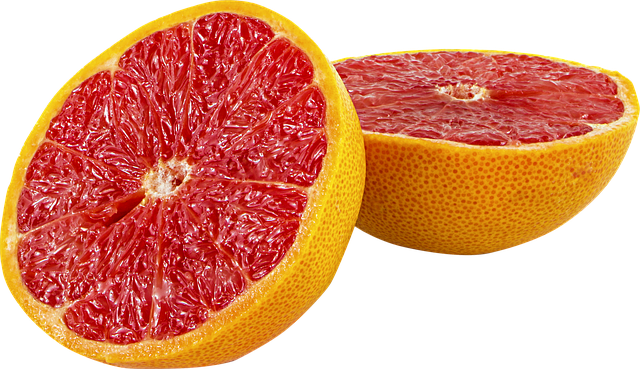
by dnshah | Jan 28, 2019 | Age Defying, Diet and Weight Loss, Health and Wellness Tips, Obesity, Stress Management
Red grapefruit is Texas’ state fruit, and celebrated in season each year (November – May). If you’ve never had Texas grapefruit, don’t miss out; and by the way, February is National Grapefruit Month, so toss them into your favorite citrus salad, bowl, or entrée.
Grapefruits are grown all over the world and come in a variety of colors. The US is a leading producer (along with China and Mexico), and Texas is a major commercial exporter of this fruit.
They are an excellent source of vitamins A & C, fiber, and also contain potassium, calcium, and an array of phytochemicals. This means it is an excellent food to boost immunity. And you know my philosophy: when you can boost your immune system, it can protect you from other evils! Eating this gem on a regular basis can ultimately help to lower risks of obesity, diabetes, heart disease (cholesterol & blood pressure), IBS, osteoporosis, and some cancers (namely colon, esophageal, & oral). Note that some of these studies were animal-based and not human; but I am presenting grapefruit as a super fruit based on the collection of all of these benefits seen in research.
NOTE: If you are on prescription medication, grapefruit can react with certain medications and enzymes affecting the quantity of medication absorption and efficacy. Please check with your doctor before mixing grapefruit and medications.
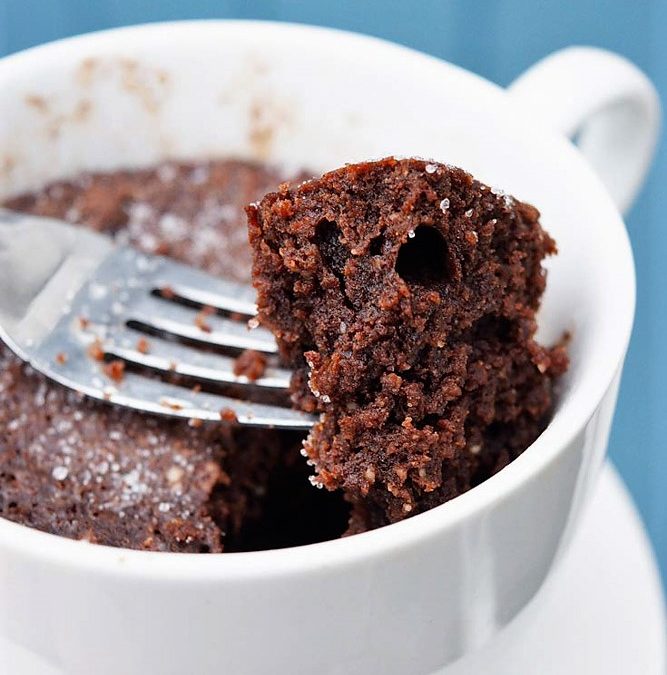
by dnshah | Jan 28, 2019 | Dessert, Diet and Weight Loss, Recipes
INGREDIENTS
- ¼ cup gluten free flour of choice
- 2 tablespoons honey
- 2 tablespoons cacao powder
- 2 Tablespoons vegan dark chocolate chips (optional)
- 1 egg
- 1 tablespoon organic virgin coconut oil, melted
- 1 tablespoon unsweetened plain coconut milk
- 1 teaspoon pure vanilla extract
- Pinch of sea salt
METHOD
- Preheat the oven to 350°F.
- Crack the egg into an ovenproof mug.
- Add liquid ingredients (honey, milk, oil, and vanilla) and beat with a fork.
- Then add the dry ingredients (flour, cacao powder, and salt) and stir until well-combined.
- Optionally add chocolate chips on top of the batter before baking.
- Bake for 15 (gooey) -20 (solid cakey) minutes. Test with a toothpick to ensure cooked through.

by dnshah | Jan 6, 2019 | Age Defying, Diet and Weight Loss, Health and Wellness Tips, Stress Management
I know… ‘tis the season to drink and be merry. A drink here and there is minimal impact to our gut; but when we indulge more than that, our guts may be getting impacted. Is this something we need to watch? Well most of us realize that when our digestion is not working as it should, our health gets impacted;1 but did you know that our digestive tract holds a majority of our immune system via billions of gut bacteria? The harmony of our gut bacteria are impacted by many unique factors, including stress, environmental vulnerabilities, and diet – which may include alcohol. Alcohol consumption impacts our microbiome and our digestion via changes in pH, saliva-bacteria interaction, and bacterial metabolism.2 Our oral microbiome changes may increase our risk for oral diseases, such as periodontal disease and dental caries. Our gut microbiome changes may increase our risk for systemic diseases, such as psoriasis, colon cancer or cardiovascular disease.2
What is defined as enough alcohol to make these risky changes within our microbiome? According to a study in Microbiome:
- Moderate consumption is defined as 0-1 glass for women/day, and 0-2 glasses for men/day
- Heavy consumption is defined as > 1 glass for women/day and > 2 glasses for men/day.
The study with over 1000 subjects showed patterns which increased alcohol consumption. With increased alcohol consumption:
- Lactobacillales (LBS) is decreased. LBS is important in maintaining the pH of a healthy oral cavity. Abnormal pH of oral cavity reduces saliva’s antimicrobial property, and that can lead to increased growth of bacteria. This was seen in the study with existence of potentially pathogenic bacteria or bacteria associated with dental caries, periodontal disease, infective endocarditis, and other infections.
- Dysbiotic bacteria takes consumed ethanol and produces acetaldehyde, which is a group I human carcinogen. Group I human carcinogen are categorized by WHO. LBS can metabolize acetaldehyde, but with decreased LBS we will find increased acetaldehyde.
So… what types of alcohol does it take to make these risky changes within our microbiome? You may have heard that wine may have antimicrobial properties; this study also supported that fact.
- Wine drinkers had a higher microbial diversity than that of non-drinkers.
- Drinkers of wine vs. beer vs. liquor had distinct oral microbial communities.2
- Dysbiosis in the oral cavity may play a role in alcohol-related carcinogenesis through increased levels of acetaldehyde.
- More research is needed to better understand the impact of each type of alcohol on the oral cavity microbiome.
This study is important to better understand the role of alcohol in our risks for chronic disease. Moderate and heavy alcohol consumption may impact our oral microbiome, which impacts our health and risk of other diseases (oral and systemic).
References
- Carding S, Verbeke K, Vipond D, Corfe BM, Owen LJ. Dysbiosis of the gut microbiota in disease. Microb Ecol Health Dis.2015;26:26191.
- Fan X, Peters BA, Jacobs EJ, et al. Drinking alcohol is associated with variation in the human oral microbiome in a large study of American adults. Microbiome. 2018;6(1):59.

